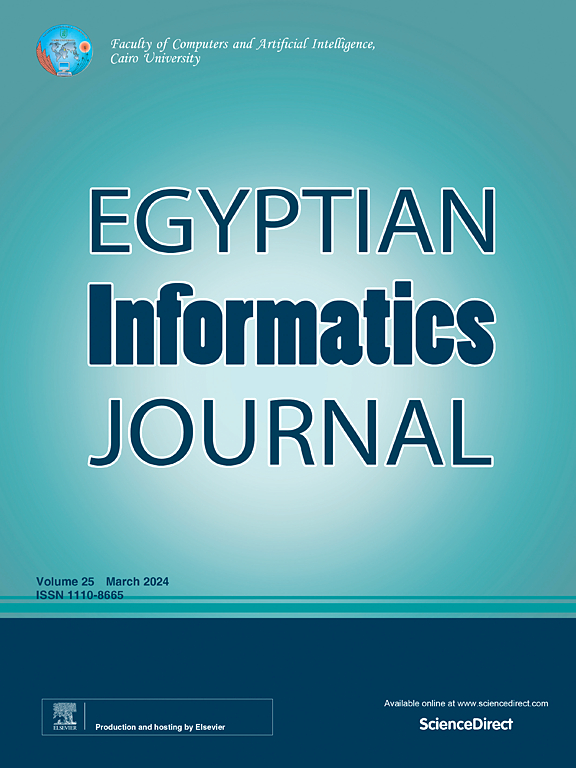5G network mobility analysis for user equipment
IF 4.3
3区 计算机科学
Q1 COMPUTER SCIENCE, ARTIFICIAL INTELLIGENCE
引用次数: 0
Abstract
The rapid proliferation of 5G networks necessitates advanced techniques for analyzing and managing user equipment (UE) mobility. Efficient mobility estimation is critical for optimizing network performance, enhancing user experience, and supporting seamless connectivity. This study focuses on 5G network mobility analysis for user equipment, aiming to develop robust methodologies for predicting and understanding UE movement patterns. Hence, leveraging network-based data, including signal strength, handover events, and location information, our approach provides a comprehensive framework for mobility estimation. One important aspect of 5G and the next networks is the coexistence of small and mega cells. Due to this heterogeneity and the greater portability of user devices, there may be a high handover frequency, which may result in an unreasonable call drop probability or an unsatisfactory user experience. The network can ensure smooth and seamless cell transitions by proactively adapting to the user through smart mobility management. In this research, we establish an algorithm that estimates the user’s mobility level with minimal computational overhead and without requiring any changes to the consumer device/equipment (UE) side, using sounded reference signal (SRS) evaluations that are readily accessible from the base location (eNodeB in 4G systems). We utilize a combination of statistical models, machine learning algorithms, and real-time network data to predict UE movement with high accuracy. Key metrics such as handover frequency, dwell time, and path prediction are analyzed to understand mobility patterns. The integration of these metrics into the network management system allows for proactive resource allocation and improved quality of service (QoS). The efficacy of the method is demonstrated with real-world information including mobility patterns. Our findings indicate that network-based mobility analysis can significantly enhance the performance of 5G networks. By accurately estimating UE mobility, network operators can optimize handovers, reduce latency, and ensure stable connections even at high speeds. Furthermore, this approach aids in the efficient management of network resources, reducing congestion and enhancing overall network efficiency. According to the results, it is possible to classify UE speed into three mobility groups with a success rate of 90 % for minimal mobility, 89 % for moderate mobility, while 98 % for extreme mobility.
用户设备5G网络移动性分析
5G网络的快速扩散需要先进的技术来分析和管理用户设备(UE)移动性。高效的移动性评估对于优化网络性能、增强用户体验和支持无缝连接至关重要。本研究侧重于用户设备的5G网络移动性分析,旨在开发预测和理解UE移动模式的强大方法。因此,利用基于网络的数据,包括信号强度、切换事件和位置信息,我们的方法为移动性估计提供了一个全面的框架。5G和下一代网络的一个重要方面是小型和大型蜂窝的共存。由于这种异构性和用户设备的可移植性,可能会出现切换频率高的情况,从而导致通话掉线概率不合理或用户体验不理想。该网络通过智能移动管理主动适应用户,保证蜂窝过渡的平稳、无缝。在本研究中,我们建立了一种算法,该算法使用可从基地位置(4G系统中的eNodeB)轻松访问的声音参考信号(SRS)评估,以最小的计算开销估计用户的移动性水平,并且不需要对消费者设备/设备(UE)侧进行任何更改。我们利用统计模型、机器学习算法和实时网络数据的组合来高精度地预测UE的移动。分析了切换频率、停留时间和路径预测等关键指标,以了解移动模式。将这些指标集成到网络管理系统中可以实现主动的资源分配和改进的服务质量(QoS)。该方法的有效性被证明与现实世界的信息,包括移动模式。我们的研究结果表明,基于网络的移动性分析可以显著提高5G网络的性能。通过对UE移动性的准确估计,网络运营商可以优化切换,降低延迟,确保高速下的稳定连接。此外,这种方法有助于有效地管理网络资源,减少拥塞,提高整体网络效率。根据结果,可以将UE速度分为三个移动性组,其中最小移动性成功率为90%,中等移动性成功率为89%,而极端移动性成功率为98%。
本文章由计算机程序翻译,如有差异,请以英文原文为准。
求助全文
约1分钟内获得全文
求助全文
来源期刊

Egyptian Informatics Journal
Decision Sciences-Management Science and Operations Research
CiteScore
11.10
自引率
1.90%
发文量
59
审稿时长
110 days
期刊介绍:
The Egyptian Informatics Journal is published by the Faculty of Computers and Artificial Intelligence, Cairo University. This Journal provides a forum for the state-of-the-art research and development in the fields of computing, including computer sciences, information technologies, information systems, operations research and decision support. Innovative and not-previously-published work in subjects covered by the Journal is encouraged to be submitted, whether from academic, research or commercial sources.
 求助内容:
求助内容: 应助结果提醒方式:
应助结果提醒方式:


